Rash Behari Bose : The Great Indian Revolutionary:
 |
| Rash Behari Bose At Young Age |
Born: May 25, 1886, Hoogly
Died: January 21, 1945, Tokyo, Japan
Rash Behari Bose was one of the key organizers of the plan to assassinate Lord Charles Hardinge. 21st January is the Death Anniversary of Rash Behari BoseRash Behari Bose played a crucial role in the Ghadar Revolution, a plan to attack British army from the inside. Rash Behari Bose was the founding father of Indian National Army (Azad Hind Fauz) that Subhash Chandra Bose capitalized on later.
Early Life of Rash Behari Bose:
Rash Behari Bose was born on May 25, 1886, in Palara-Bighati (Hoogly) village. His mother passed away in 1889 when Rash Behari was still a baby. He was brought up thereafter by his maternal aunt Vama Sundari.Rash Behari Bose was initially educated at Subaldaha under the supervision of his grandfather, Kalicharan, and later in Dupleix College at Chandernagore. At the time Chandernagore was under French rule thus, Rash Behari was influenced by both British and French culture. The French Revolution of 1789 had a deep impact on Rash Behari. Rash Behari Bose was not a very attentive student. He was a day-dreamer, his mind preoccupied with revolutionary ideas. He was more interested in his physical prowess than his studies.
Roots of the Patriotism in Rash Behari Bose:
Rash Behari Bose got hold of a well-known revolutionary novel called "Ananda Math (Abbey of Bliss)" written by noted Bengali novelist, poet and thinker, Bankim Chandra Chatterjee. Rash Behari also read the famous Bengali poet, Navin Sen's, Plasir Yudha, a collection of patriotic poems. In course of time he read other revolutionary books. He read nationalistic speeches by orator and revolutionary, Surendranath Banerjea, and Swami Vivekananda. In Chandernagore, his teacher Charu Chand, a man of radical ideas, inspired Rash Behari along revolutionary lines.Rash Behari Bose did not get a chance to complete college because his uncle got him a job at Fort William. From there he transferred to the Government press in Shimla on his father's wish. He was appointed the copy-holder in the press and was able to master English and typewriting. After some time he moved to the Pasteur Institute in Kasauli. Rash Behari was not happy with these jobs.On a colleague's advice,Rash Behari Bose went to Dehra Dun as a guardian tutor in the house of Pramantha Nath Tagore. He got a clerical post at the Dehra Dun Forest Research Institute where through hard work, Rash Behari became a head-clerk.
The famous Bomb attack on Lord Hardinge by Rash Behari Bose:
It was the 23rd December 1912. The Viceroy and the Vicerene were on the elephant back. Ladies were excitedly waiting for the procession to arrive. Basant (dressed as a girl) was one amongst them. The point chosen was the Clock-tower in Chandni Chowk, near the Punjab National Bank. The bomb was to be thrown when the elephant would be just in front. Rash Behari would be at a nearby point and Awadh Bihari would be just opposite, to throw the bombs if Basant somehow failed.
The atmosphere was electrifying, when it just occurred to Rash Behari that the practice of bomb throwing in cigarette tins at Dehrudun would be of no avail. It was from the ground to the imaginary height of the target on an elephant back. He just rushed in and asked Basant to enter the bathroom and quickly change his Sari to male clothes which he was carrying. There came out a handsome boy in place of a beautiful girl. In the all round excitement of the moment, none noticed the 'sartorial change of sex' of the boy from Bengal. He came down and got mixed up with the crowd on the foot path. But the bombs were not thrown by him but probably by Awadh Bihari. The Viceroy was seriously injured and was taken to a famous doctor, A.C. Sen, nearby. Awadh Bihari was later hanged but Rash Behari could not be touched.
Rash Behari Bose returned to Dehradun by the night train and joined the office the next day as though nothing had happened. Further, he organised a meeting of loyal citizens of Dehradun to condemn the dastardly attack on the Viceroy. Who on earth could imagine that he was the same person who had masterminded and executed the most outstanding revolutionary action. Lord Hardinge in his My Indian Years had described the whole incident in an interesting way.
Continuing struggle for Indian Freedom by Rash Behari Bose from Japan:
Rash Behari Bose left Calcutta on May 12, 1915. He went to Japan as Raja P.N.T. Tagore, a distant relative of Rabindranath Tagore. Some historians say that Rabindranath Tagore was aware of this impersonation. Rash Behari reached Singapore on May 22, 1915 and Tokyo in June. Between 1915 and 1918, Rash Behari lived almost like a fugitive, changing his residence 17 times. During this period he met Herambalal Gupta and Bhagwan Singh of the Ghadar Party. Japan was an ally of Britain's in the First World War and tried to extradite Rash Behari and Herambalal from Japan. Herambalal escaped to U.S.A. and Rash Behari ended his hide and seek by becoming a Japanese citizen. He married Tosiko, daughter of the Soma family who were sympathetic toward Rash Behari's efforts. The couple had two children, a boy, Masahide, and a girl, Tetaku. Tosiko died in March 1928 at the age of 28
 |
| Indian revolutionary leader Rash Behari Bose with his Japanese Wife Toshiko |
Rash Behari Bose learned Japanese and became a journalist and writer. He took part in many cultural activities and wrote many books in Japanese, explaining India's viewpoints. It was due to Rash Behari's efforts that a conference was help in Tokyo from March 28 to 30, 1942, for discussion on political issues.
Formation of Azad Hind Fauj by Rash Behari Bose:
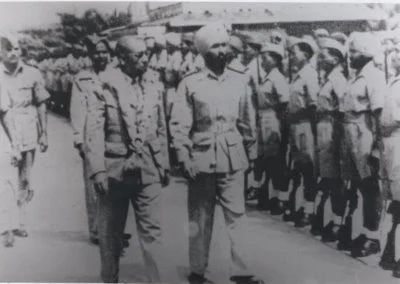 |
| An old photo of Rash Behari Bose with Azad Hind Fauj |
Following a conference held in Tokyo on 28th March 1942, it was decided to establish the Indian Independence League. After a few days it was decided to make Subhash Chandra Bose as its president. The Indian prisoners that were captured by the Japanese in Malaya and Burma were encouraged to join the Indian Independence League and the Indian National Army. It was the efforts of Rash Behari, along with Captain Mohan Singh and Sardar Pritam Singh, due to which Indian National Army came into existence on September 1, 1942. It was also known as Azad Hind Fauz.
Life of Great Rash Behari Bose in Bengali Graphical Story Form:
\
Source : http://www.hindujagruti.org/articles/90.html
Picture Source :http://www.oldindianphotos.in/2012/01/indian-revolutionary-leader-rash-behari.html
Graphic Story of Rash Behari Bose : From My Old Amar Chitra Katha Collection
























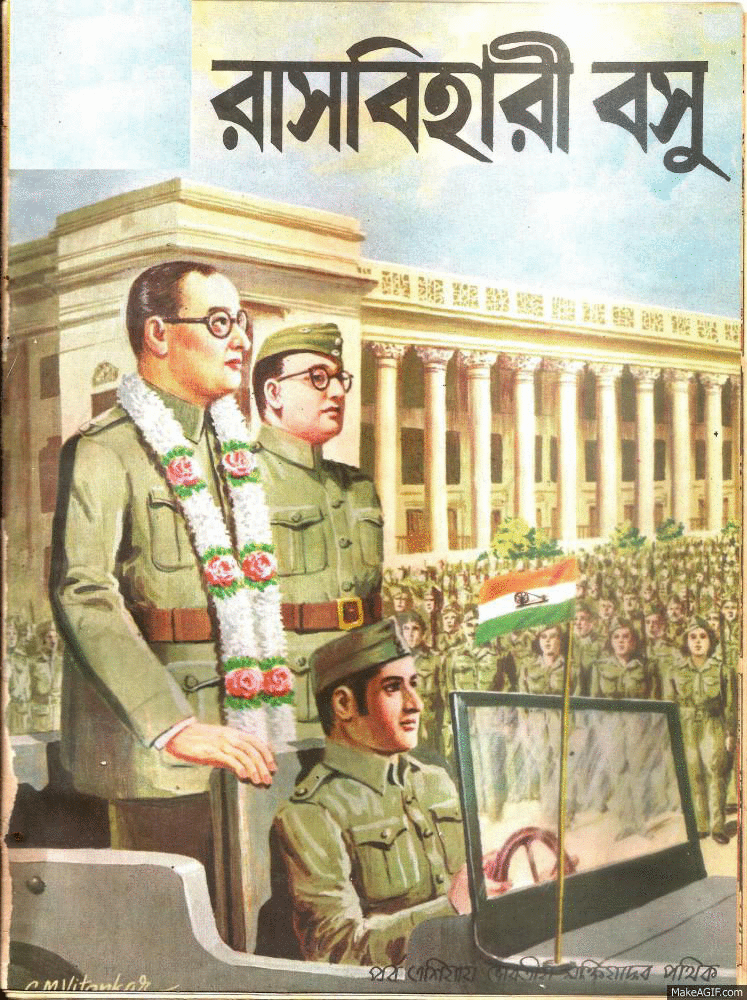


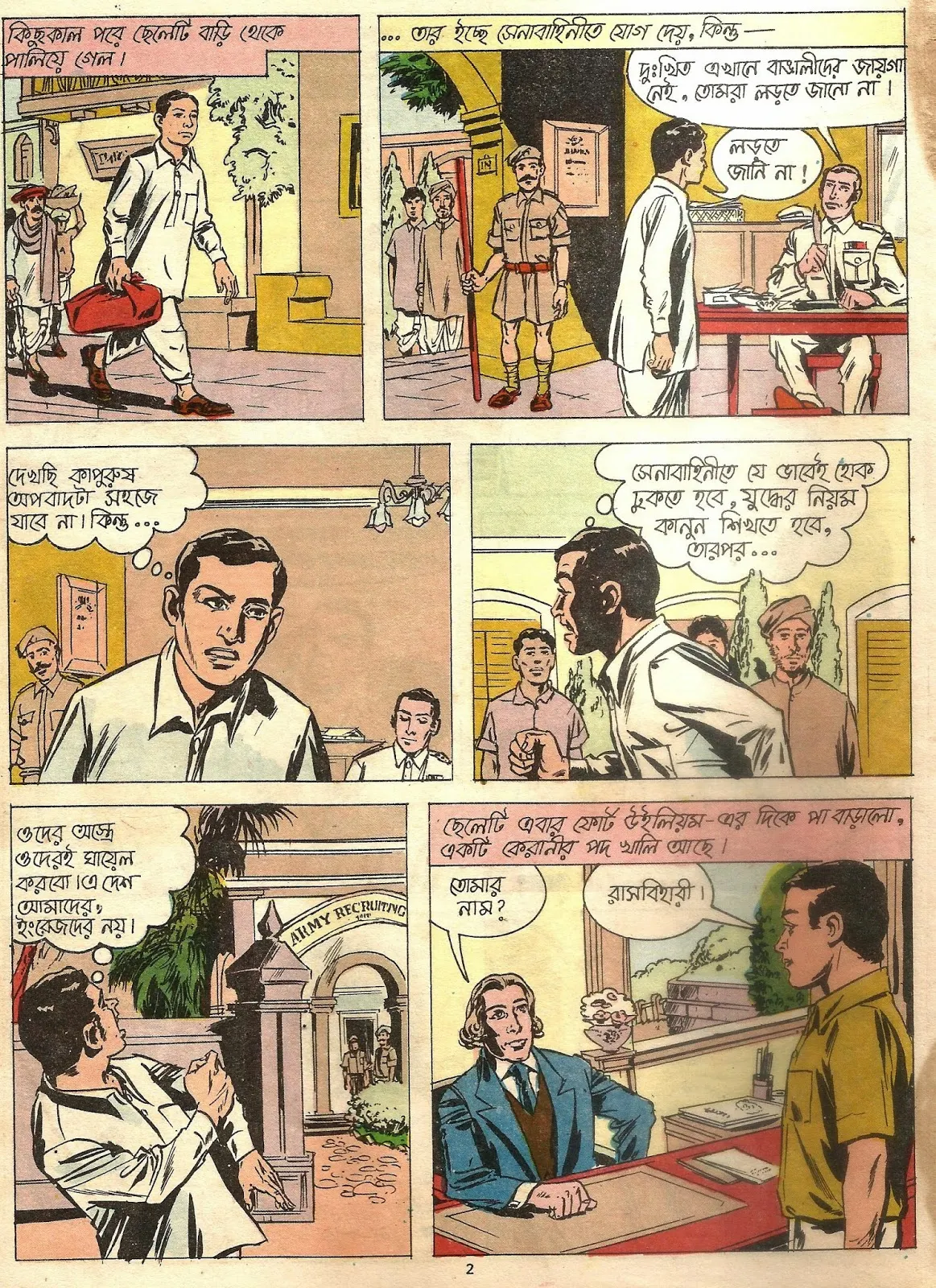



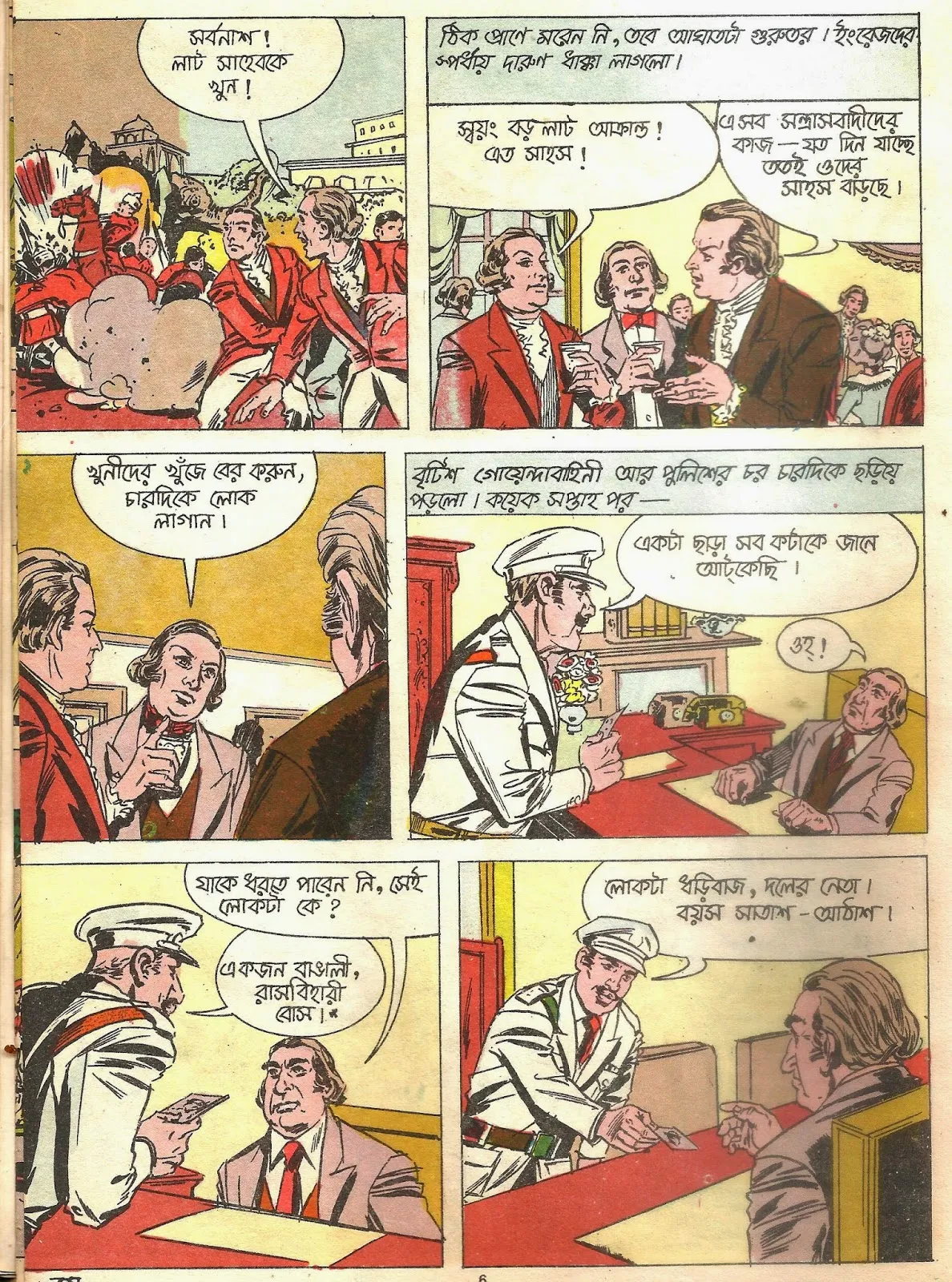

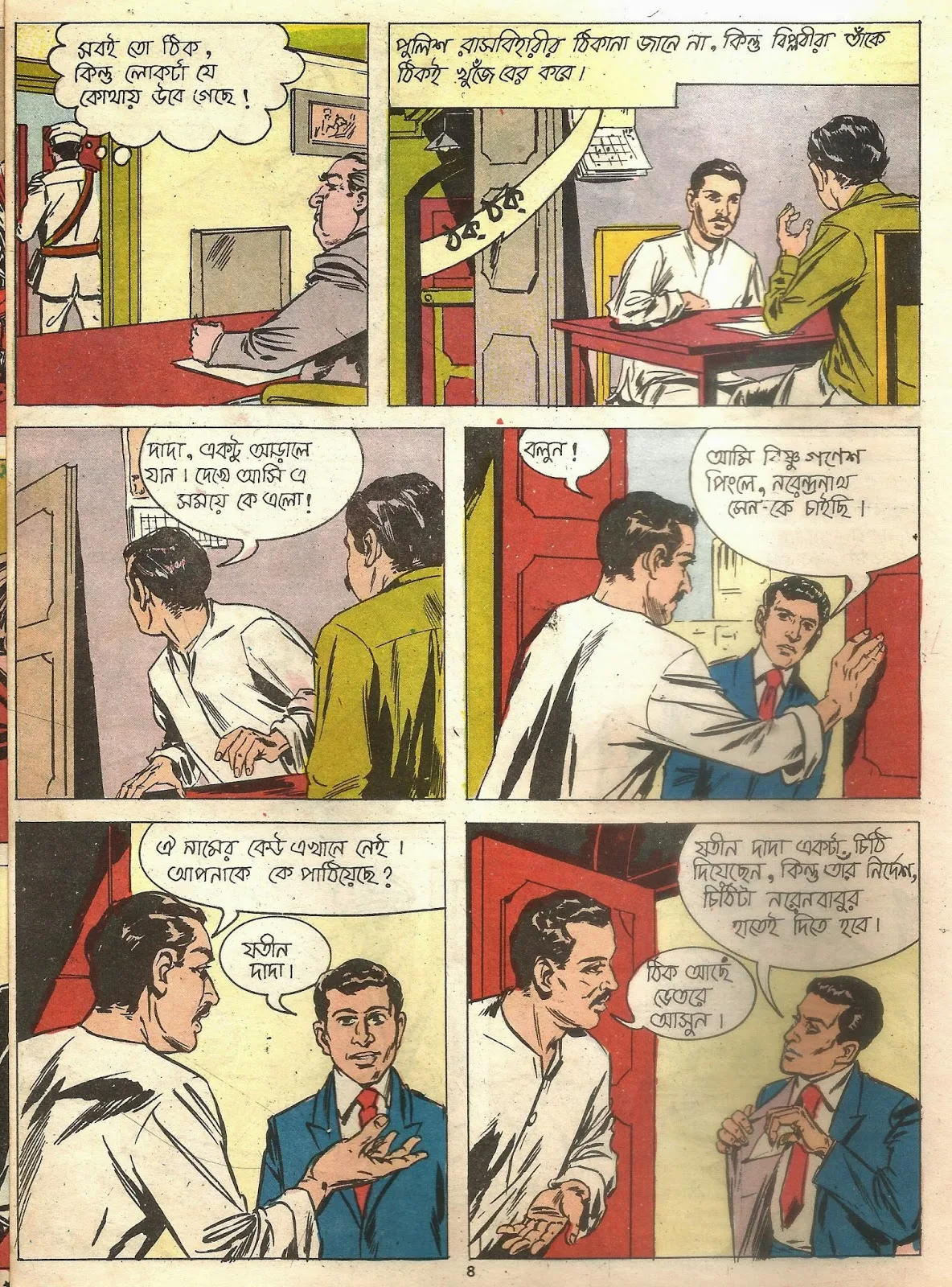











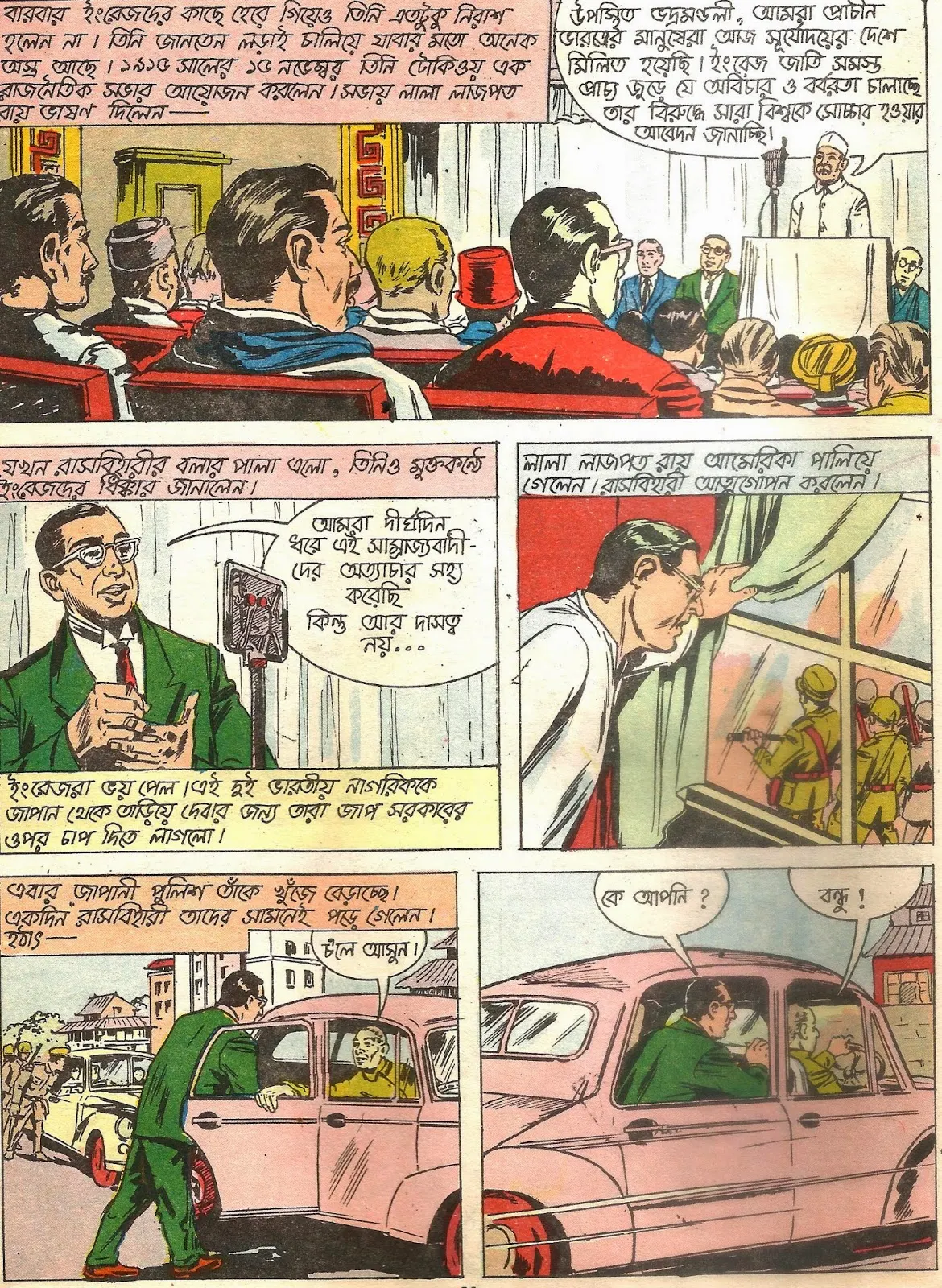







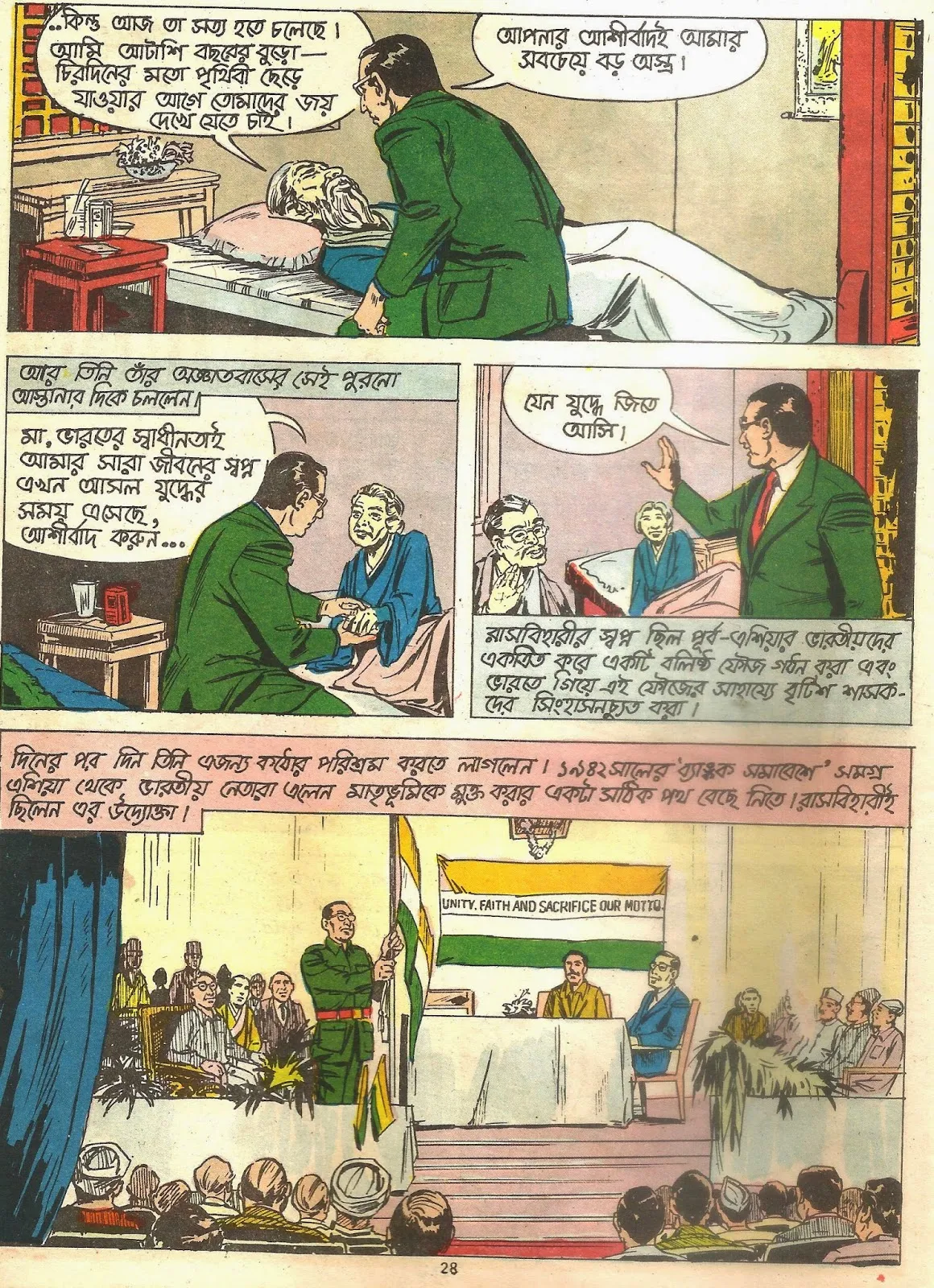

 Online Movies
Online Movies
No comments:
Post a Comment